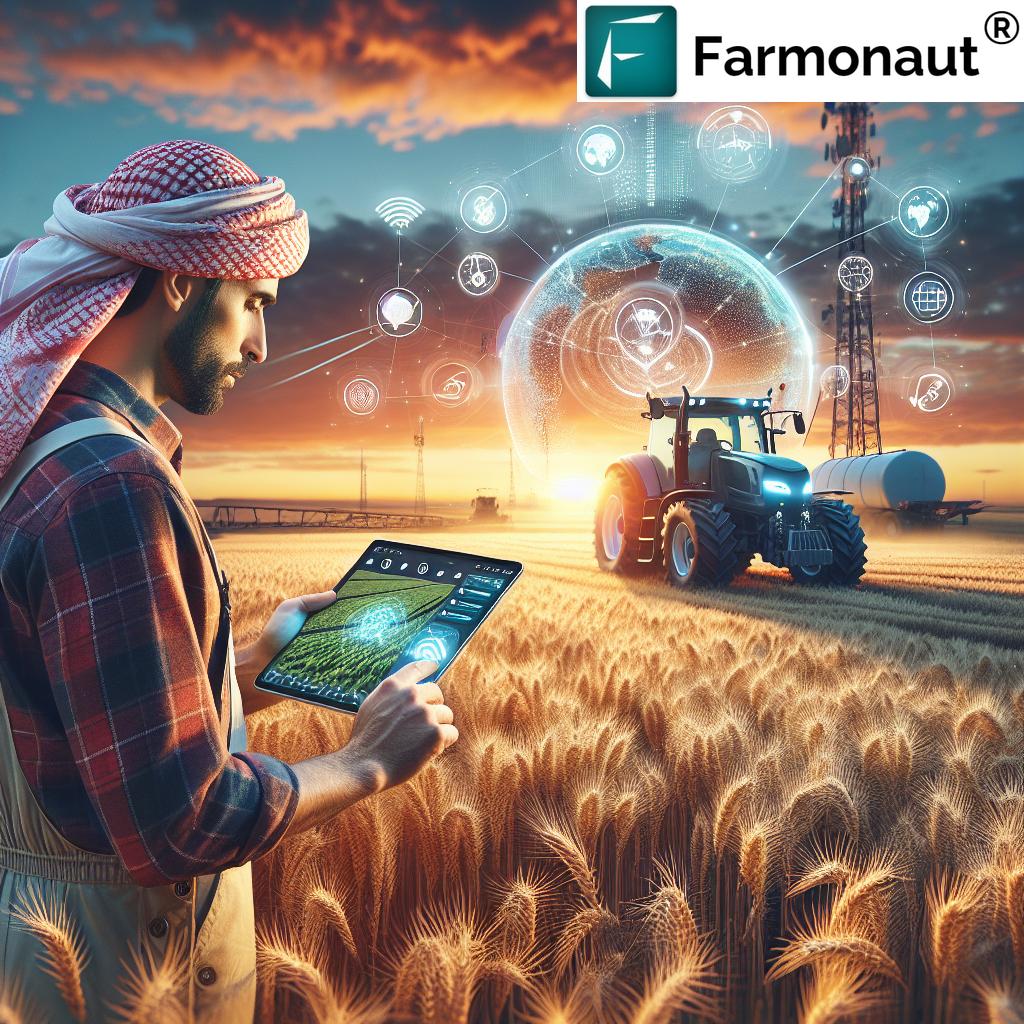Revolutionizing Ag Communications: Digital Platforms and Precision Technology Reshaping Farm Media in San Diego

“Over 6,000 radio stations cover agribusiness news, showcasing the extensive reach of agricultural media.”
In the bustling agricultural hub of San Diego, we’re witnessing a remarkable transformation in how farm-related information is communicated and consumed. The convergence of digital platforms and precision technology is reshaping the landscape of agricultural media, creating new opportunities and challenges for farmers, journalists, and industry professionals alike. As we delve into this exciting evolution, we’ll explore how these changes are impacting the way we share, access, and utilize crucial agricultural information.
The Changing Face of Agricultural Media
The agricultural sector has long relied on traditional media outlets to disseminate information. However, the advent of digital technologies has ushered in a new era of agricultural communications. Let’s examine how this shift is unfolding:
- From Print to Pixels: While print magazines and newspapers still have their place, digital platforms are increasingly becoming the go-to source for up-to-date agricultural news and insights.
- Radio Remains Resilient: Despite the digital revolution, radio continues to play a vital role in ag communications, with thousands of stations dedicated to agribusiness news.
- Rise of Social Media: Platforms like Twitter, Facebook, and LinkedIn have become invaluable tools for real-time updates and networking within the agricultural community.
- Mobile Apps and Precision Agriculture: Specialized apps and software, such as Farmonaut’s crop management platform, are putting powerful tools directly into farmers’ hands.
The Role of Agricultural Conferences in the Digital Age
Agricultural conferences, like the renowned Commodity Classic, continue to play a crucial role in bringing together industry stakeholders. However, these events are evolving to incorporate digital elements:
- Hybrid Events: Many conferences now offer both in-person and virtual attendance options, expanding their reach and accessibility.
- Digital Networking: Apps and online platforms facilitate connections between attendees, speakers, and exhibitors.
- Live Streaming: Keynote speeches and important sessions are often broadcast live, allowing a global audience to participate.
- Social Media Integration: Event hashtags and live-tweeting have become standard practice, creating a broader conversation around conference topics.
The Impact of Internet Access on Agricultural Journalism
The proliferation of internet access in rural areas has been a game-changer for agricultural journalism:
- Real-Time Reporting: Journalists can now file stories directly from the field, providing timely updates on crop conditions, market trends, and industry events.
- Data-Driven Storytelling: Access to vast amounts of agricultural data allows for more in-depth, analytical reporting.
- Multimedia Content: Online platforms enable the integration of text, images, video, and interactive elements to create richer, more engaging stories.
- Citizen Journalism: Farmers and agricultural workers can now share their own stories and insights directly through social media and blogs.
Explore Farmonaut’s innovative solutions:
Precision Agriculture Technology: A New Frontier in Farm Media
Precision agriculture technologies are not just changing how we farm; they’re also transforming how we communicate about farming:
- Satellite-Based Monitoring: Services like Farmonaut utilize satellite imagery to provide real-time crop health data, revolutionizing how farmers track and manage their fields.
- IoT and Sensor Networks: Connected devices in the field generate vast amounts of data, providing new avenues for reporting and analysis.
- AI and Machine Learning: Advanced algorithms help interpret complex agricultural data, making it more accessible and actionable for farmers and journalists alike.
- Blockchain for Traceability: This technology is enhancing supply chain transparency, offering new storytelling opportunities around food provenance and safety.
The Democratization of Agricultural Information
Digital platforms have democratized access to agricultural information, breaking down traditional barriers:
- Open Access Research: Scientific studies and agricultural research are increasingly available online, free of charge.
- Farmer-to-Farmer Networks: Online forums and social media groups allow farmers to share knowledge and experiences directly.
- Educational Resources: Webinars, online courses, and digital libraries provide accessible learning opportunities for farmers and ag professionals.
- Crowdsourced Data: Platforms that aggregate data from multiple sources offer comprehensive insights into agricultural trends and practices.
“The Commodity Classic event brings together journalists, industry leaders, and innovators, highlighting the importance of agricultural conferences.”
Challenges in the Digital Agricultural Media Landscape
While the digital revolution in agricultural communications offers numerous benefits, it also presents challenges:
- Digital Divide: Not all rural areas have reliable internet access, potentially creating information gaps.
- Information Overload: The sheer volume of available data can be overwhelming, making it difficult to discern what’s truly relevant.
- Misinformation: The ease of publishing online can lead to the spread of inaccurate or misleading information.
- Data Privacy and Security: As more agricultural data is collected and shared, ensuring its protection becomes increasingly important.
Discover Farmonaut’s mobile solutions:
The Future of Agricultural Communications
As we look to the future, several trends are likely to shape the continued evolution of agricultural media:
- Augmented and Virtual Reality: These technologies could offer immersive experiences, allowing users to virtually explore farms or visualize complex agricultural data.
- Voice-Activated Assistants: AI-powered voice assistants could provide farmers with hands-free access to crucial information while working in the field.
- Predictive Analytics: Advanced data analysis tools will offer increasingly accurate forecasts for weather, market trends, and crop yields.
- Personalized Content Delivery: AI algorithms will curate and deliver highly relevant information tailored to each farmer’s specific needs and interests.
The Role of Farmonaut in the New Agricultural Media Landscape
As digital platforms and precision technology continue to reshape farm media, Farmonaut stands at the forefront of this revolution. Our crop management software aligns perfectly with the emerging trends in agricultural communications:
- Real-Time Data: Farmonaut provides farmers with up-to-the-minute information on crop health, soil conditions, and weather patterns, enabling data-driven decision-making.
- Accessibility: Our platform is designed to be user-friendly and accessible across various devices, ensuring that crucial agricultural information is always at farmers’ fingertips.
- Integration: Farmonaut’s API allows for seamless integration with other agricultural tools and platforms, contributing to a more connected and efficient farming ecosystem.
- Sustainability Focus: By helping farmers optimize resource use and reduce waste, Farmonaut aligns with the growing emphasis on sustainable agriculture in media coverage.
Explore Farmonaut’s API capabilities: Farmonaut API
For developers: API Developer Docs
Comparison: Digital Platforms Reshaping Agricultural Communication
| Communication Channel | Reach (Estimated) | Key Benefits | Challenges |
|---|---|---|---|
| Print Magazines | 100,000 – 500,000 | In-depth analysis, trusted source | Slow update cycle, limited interactivity |
| Radio | Millions (6,000+ stations) | Wide reach, local focus | Limited visual content, scheduled programming |
| Social Media | Billions (global potential) | Real-time updates, high engagement | Information overload, credibility concerns |
| Mobile Apps (e.g., Farmonaut) | Millions of users | Personalized insights, data-driven decisions | Requires digital literacy, internet connectivity |
| Precision Agriculture Software | Growing rapidly | Advanced analytics, resource optimization | Initial learning curve, integration challenges |
Conclusion: Embracing the Digital Revolution in Agricultural Communications
As we’ve explored throughout this article, the landscape of agricultural media is undergoing a profound transformation. Digital platforms and precision technology are not just changing how information is shared; they’re revolutionizing the very nature of farming itself. From the bustling conference halls of San Diego to the vast fields of the Midwest, these innovations are creating new opportunities for collaboration, education, and advancement in agriculture.
The future of agricultural communications is bright, with endless possibilities for more efficient, sustainable, and productive farming practices. As we move forward, it’s crucial that we continue to embrace these technological advancements while also addressing the challenges they present. By doing so, we can ensure that the agricultural sector remains at the forefront of innovation, ready to meet the growing demands of a hungry world.
At Farmonaut, we’re proud to be part of this exciting journey, providing farmers with the tools they need to thrive in this new digital landscape. Together, we can build a more connected, informed, and resilient agricultural community.
FAQ Section
- How are digital platforms changing agricultural communications?
Digital platforms are providing real-time updates, facilitating direct farmer-to-farmer communication, and offering access to vast amounts of agricultural data and research. - What role do agricultural conferences play in the digital age?
Conferences like the Commodity Classic now offer hybrid formats, combining in-person networking with virtual attendance options and digital tools for enhanced engagement. - How is precision agriculture technology impacting farm media?
Precision ag tech is generating new types of data and insights, leading to more data-driven reporting and decision-making in agriculture. - What challenges does the digital revolution in agricultural media present?
Key challenges include the digital divide in rural areas, information overload, the potential spread of misinformation, and data privacy concerns. - How is Farmonaut contributing to the evolution of agricultural communications?
Farmonaut provides real-time crop management data and insights, aligning with the trend towards more accessible, data-driven agricultural information.
Farmonaut Subscriptions







